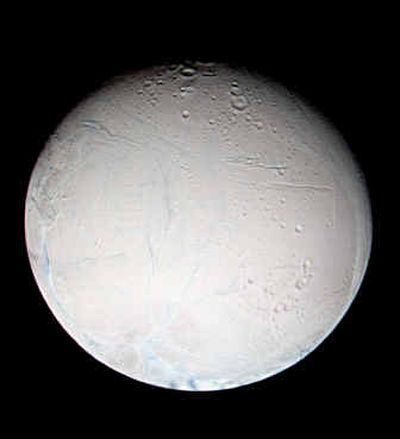Saturn’s 2nd moon has atmosphere

The Cassini spacecraft, which has been unveiling the secrets of Saturn’s giant moon Titan, has found an atmosphere on a second moon circling the ringed planet.
The discovery of an atmosphere around the icy moon Enceladus is perplexing scientists because, at only 310 miles in diameter, it had been considered far too small to be able to hold on to an atmosphere.
Scientists discovered something unusual was going on at Enceladus on March 9, when Cassini approached to within about 300 miles of the surface. The spacecraft measured fluctuations in the moon’s magnetic field that were consistent with a surface atmosphere, according to researchers at NASA’s Jet Propulsion Laboratory.
Scientists are uncertain what the atmosphere is made of. Cassini’s instruments detected ionized water vapor, water that carries a positive or negative charge.
Because the moon’s gravity is far too low to keep an atmosphere from floating into space, scientists believe some internal process on the moon, such as volcanism, must be continually resupplying the atmosphere.
Ice volcanoes continually coating the surface with new ice particles would explain why the moon is the most reflective object in the solar system, reflecting as much as 90 percent of the sun’s light.
The Cassini-Huygens mission was launched on Oct. 15, 1997, and so far has discovered two new moons.